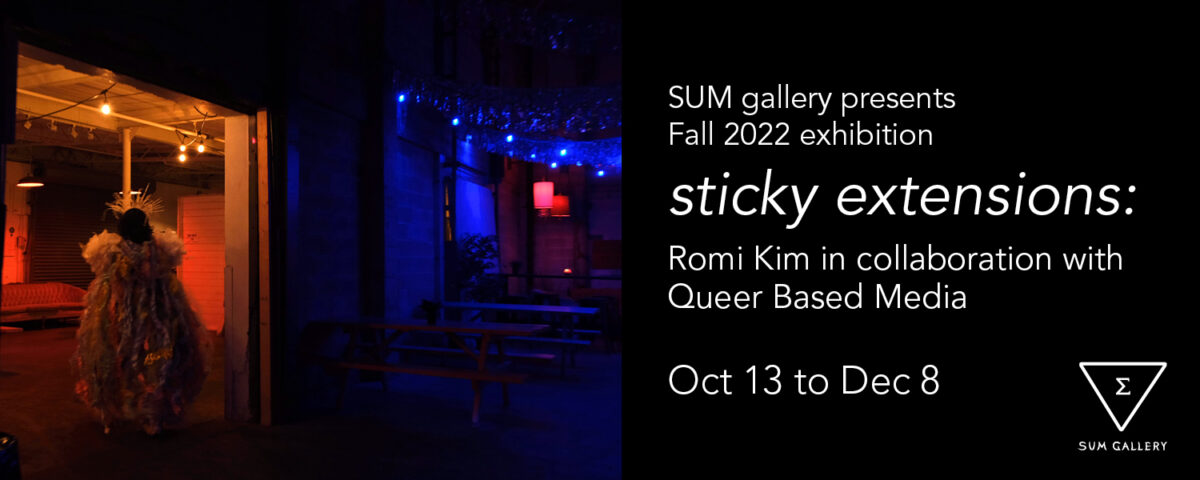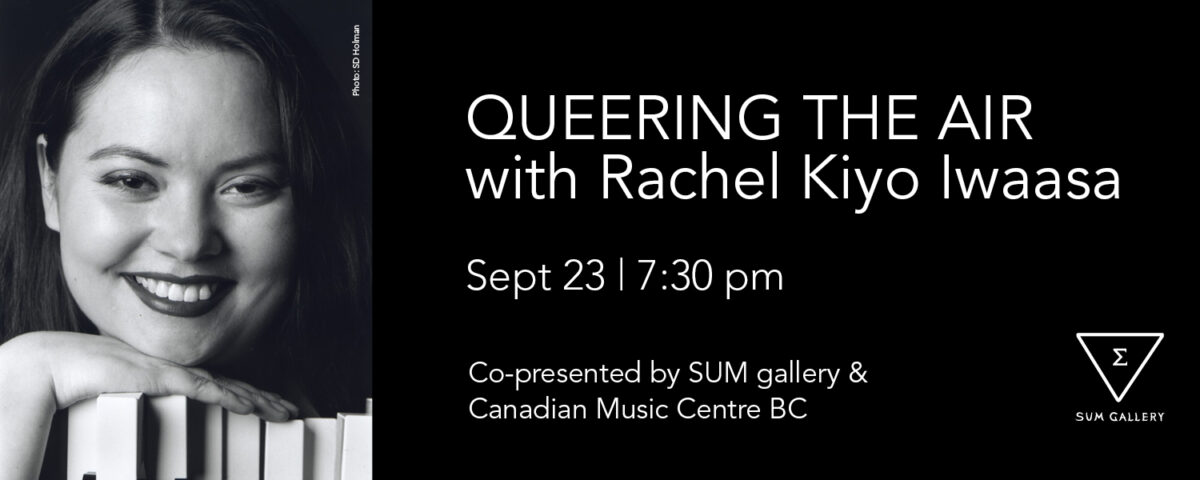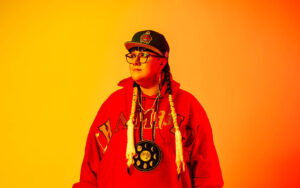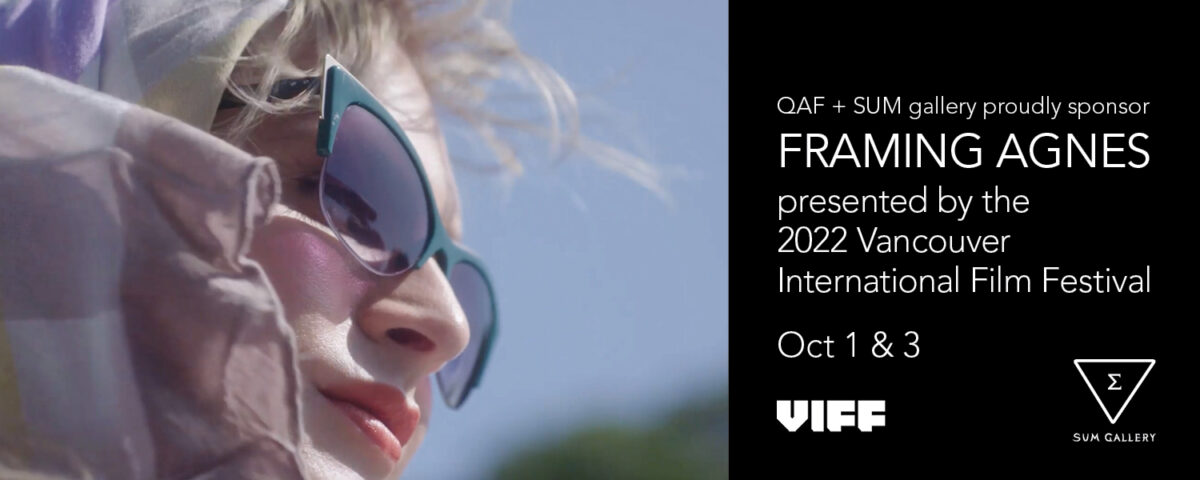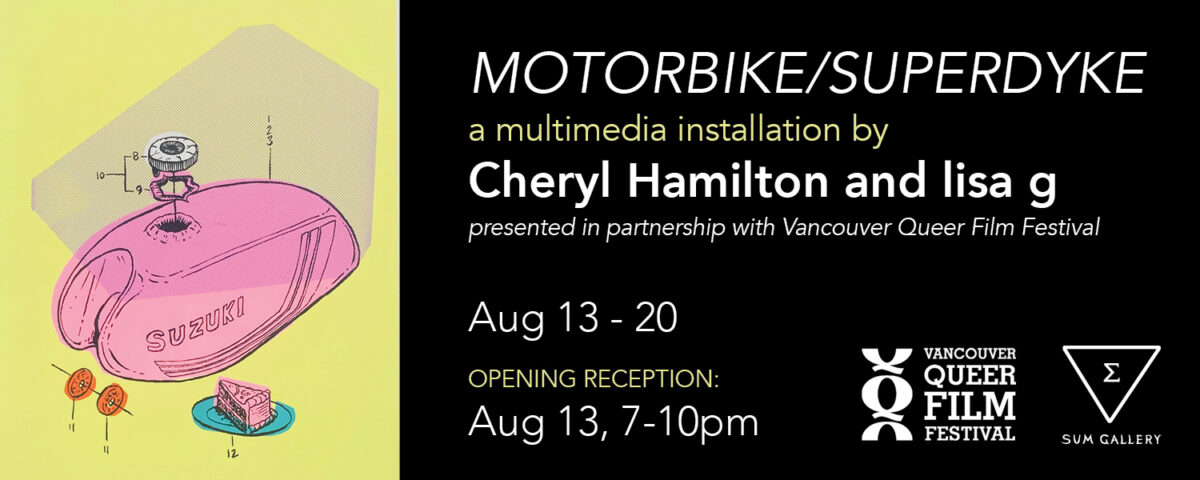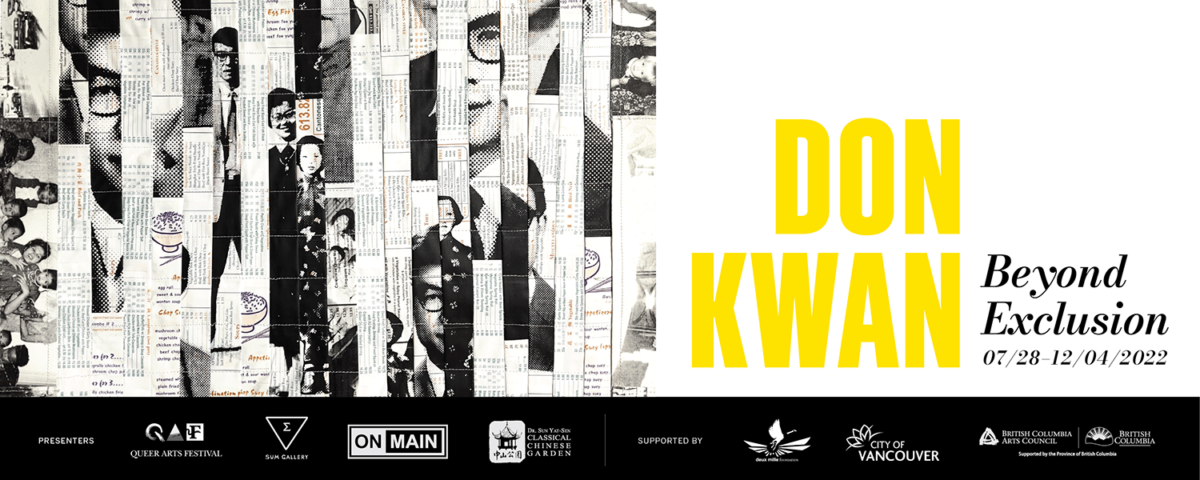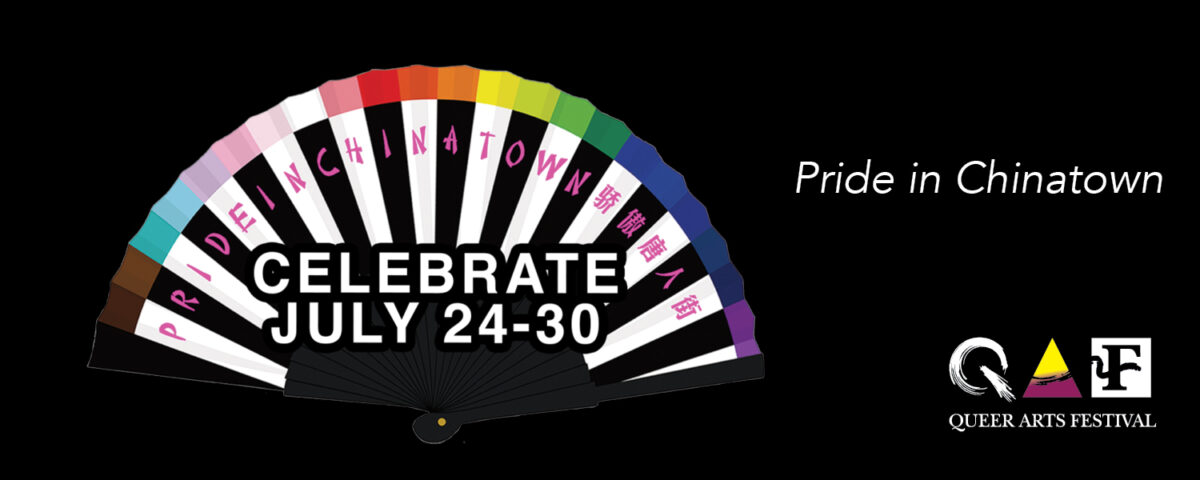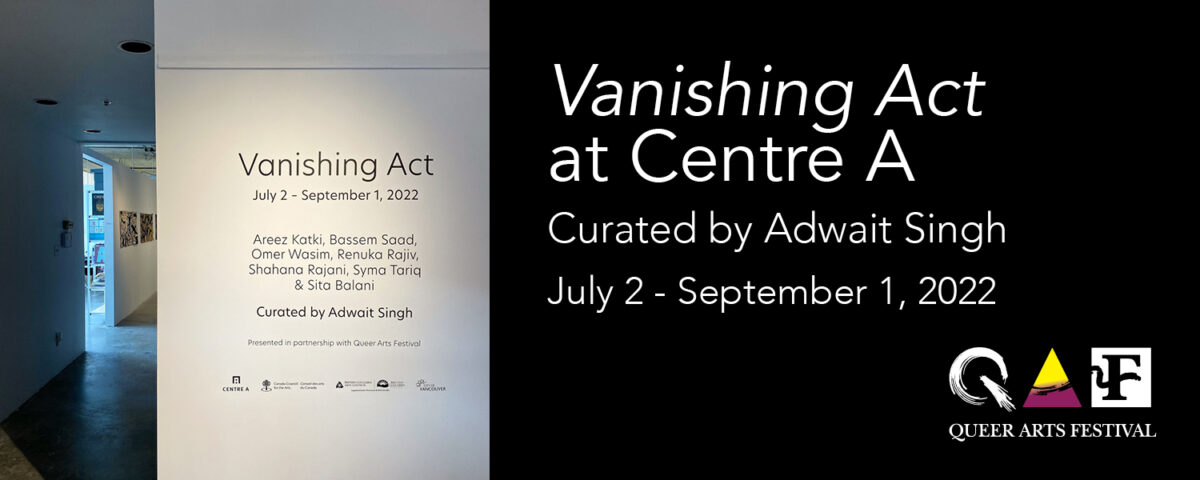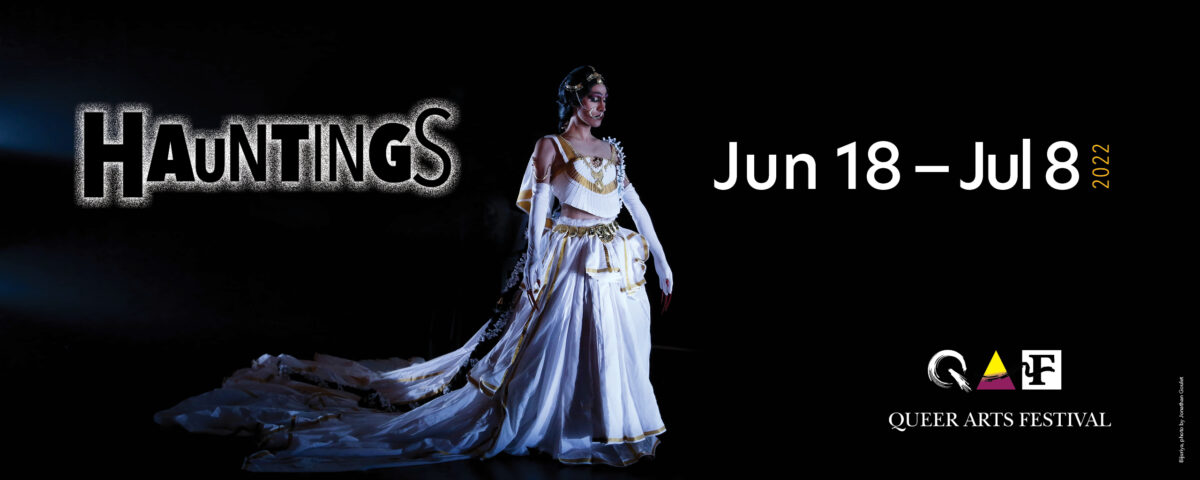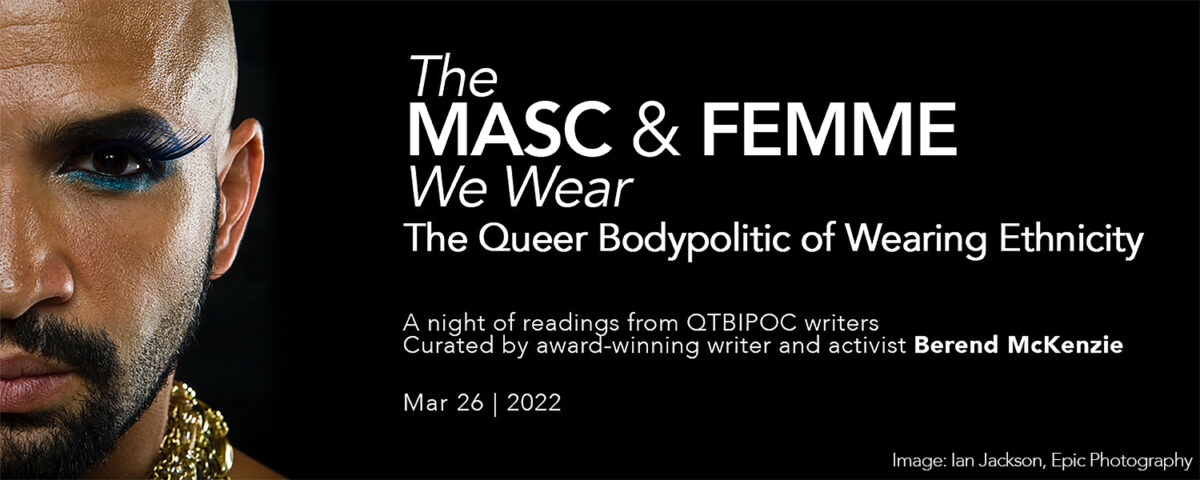sticky extensions: Romi Kim in collaboration with Queer Based Media
Exhibition runs Oct 13 to Dec 8
Gallery hours: Tue–Sat, 12 to 6pm
Opening reception & performance: Oct 13, 6pm | SOLD OUT
Rhythms dance workshop: Oct 6, 6pm | SOLD OUT
Home meal feast workshops: Oct 26 & Nov 9, 6pm | SOLD OUT
Re: check in performance from SKIM & Bongganisa: Nov 24, 6pm | SOLD OUT
Romi Kim’s SUM gallery exhibition debut explores relationships through transformations of drag and play within created spaces. sticky extensions hosts collaborations with fellow artists Romeo Villanueva III, and Queer Based Media – Chris Reed and Kendell Yan – through performance, video and installations. Through video they explore the legacy and precarious existence of Warehouse, a DIY event space that has transformed endlessly for the Eastside queer racialized and trans communities. The exhibition opening night holds a meditative performance of care with drag artists SKIM, Maiden China and Continental Breakfast.
Throughout the course of the show, Romi and Romeo will be inviting participants to attend workshops exploring the communing experience of eating together and moving with one another. sticky extensions will evolve throughout its exhibition run, marked by performances from drag artists Bongganisa, SKIM, Maiden China and Continental Breakfast in the gallery. The artists will explore their relationship with one another in various ways throughout the exhibition. sticky extensions navigates Romi Kim’s extensions through spaces such as Warehouse, their relationships and their own body extending through materials. It will be a sticky experience.
Stickiness is tacky. It attaches one’s body or object to another body or object, sensation and feeling. It can create emotions of annoyance, disgust and fascination. sticky extensions explores the burden of 情 정: an untranslatable word that expresses attachment, feelings of connection and warmness that provoke social reciprocity. 情 encourages being present in your actions in order to create understanding. It grows over time. Kim’s exhibition is centred in thinking through relationality and thinking about their body made up with connections around them. As the exhibit continues, the space transforms over time through acts of performance, world building and homemaking.
sticky extensions is made possible by the generous the support of Metro Vancouver’s Regional Cultural Project Grants program and The Hamber Foundation.

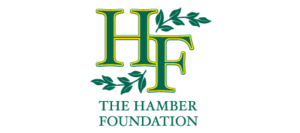
Exhibition Workshops & Events:
- Rhythms dance workshop – Oct 6, 6pm
Artists Romi Kim & Romeo Villanueva III hosts an intimate dance and movement workshop in advance of their sticky extensions exhibition opening.
This 2-hour dance workshop brings participants along a movement journey following a “wave” of rhythms. The 5Rhythms* are called flow, staccato, chaos, lyrical, and stillness. This workshop will create a safe space for people of all dance experience and encourage dancers to ground themselves in their body and share a space of togetherness.
*5Rhythms is a movement meditation practice devised by Gabrielle Roth in the late 1970s. It draws from indigenous and world traditions using tenets of shamanistic, ecstatic, mystical and eastern philosophy. It also draws from Gestalt therapy, the human potential movement and transpersonal psychology. Fundamental to the practice is the idea that everything is energy, and moves in waves, patterns and rhythms.
- 잘 먹겠습니다 (Korean food workshop experience 1) – Oct 26, 6pm
In this intimate, 4-person workshop, guests will be invited into the space and be provided with a meal made by artists Romi Kim and Romeo Villanueva III. Attendees are asked to bring their own small, sharable food item to the meal. For second-generation Asians, food is often a strong connection to culture and a form of showing love. This first of two home feast meals focuses on the Korean jal meokgetseumnida. Romi and Romeo wish to share this communal experience with workshop participants. Please note that the meal provided will likely include meat, fish or seafood.
- Kain Tayo (Filipino food workshop experience 2) – Nov 9, 6pm
In this intimate, 4-person workshop, guests will be invited into the space and be provided with a meal made by artists Romi Kim and Romeo Villanueva III. Attendees are asked to bring their own small, sharable food item to the meal. For second-generation Asians, food is often a strong connection to culture and a form of showing love. This second of two home feast meal workshops focuses on the Filipino Kain Tayo. Romi and Romeo wish to share this communal experience with workshop participants. Please note that the meal provided will likely include either meat, fish or seafood.
- Re: check in performance – Nov 24, 6pm
Re: check in by Bongganisa and SKIM explores through drag, materiality and performance what it means to maintain a relationship. The two artists started their friendship in 2011 after meeting each other at a weeklong summer camp. Bongganisa lived in Maple Ridge at the time and SKIM in Armstrong. They emailed each other everyday for an entire year. Their journey’s have since brought them to live and work with one another in the same place.
SKIM defines drag as a performance of gender, explored through fantasy and play. Bongganisa sees drag as creative radical expression through queerness and transformation. Both believe drag is political and important in thinking through possibilities of how a person resides in everyday life.
Re: check in is an intimate inquiry into the politics of being in drag and focuses on the importance of Bongganisa and SKIM’s relationship in order to offer various ways of understanding one’s being, knowing and doing.
This event is ASL-interpreted.
ABOUT ROMI KIM
김새로미, Romi Kim or SKIM in drag, is a queer, genderfluid, second-generation Korean. They identify themselves in recognizing these words as verbs rather than nouns or adjectives—constantly in action, and in flux. They are an uninvited settler living and working on the unceded xwməθkwəy̓əm (Musqueam), Sḵwx̱wú7mesh (Squamish), and Sel íl ̓witulh (Tsleil-Waututh) Nations. Kim explores personal histories, vulnerability, and intimacy within colonial spaces within their work. They are interested in transforming the power of a story and privileges within language. Kim has a collaborative artistic practice as part of the House of Rice, an all-Asian drag house in Vancouver and a solo one. Kim has shown works in South Korea, in the United Kingdom, and across Canada. They have performed in South Korea, Vietnam, online internationally, and in Vancouver. Kim received a BFA in Visual Arts and Gender Studies at the University of Victoria in 2017 and they are currently studying at the University of British Columbia as an MFA candidate.
ABOUT QUEER BASED MEDIA
Queer Based Media is a QTPOC multimedia production company that provides videography, photography, projection installation, and design work for queer creators on the unceded territories of the xwməθkwəy̓əm (Musqueam), Skwxwú7mesh (Squamish), and Səl ̓ílwətaʔ/Selilwitulh (Tsleil-Waututh) Nations (so-called Vancouver, BC). Queer Based Media has produced award winning work for non-binary drag collective, The Darlings; The Transform Cabaret Festival, Indigiqueer filmmaker Rylan Friday, and Lantern Films. In addition to producing content, Queer Based Media provides a digital venue on their website for mutual aid and social equity fundraisers, such as Rainbow Refugee, and Visible. Queer Based Media is Vee Pho, Chris Reed, and Kendell Yan. https://www.queerbasedmedia.com/
ABOUT ROMEO VILLANUEVA III
Romeo Villanueva III (he/him) is a visual artist and drag performer working on the traditional territories of Musqueam, Squamish, and Tsleil-Waututh First Nations (Vancouver). His work explores identity and expression by reflecting on past experiences and reimagining those experiences through illustration, costume, or performance. He has received a Bachelor’s Degree in Visual Arts from the University of Victoria, and a Bachelor’s Degree in Education from the University of British Columbia. Throughout Vancouver, Villanueva can be seen performing as his drag persona Bong Ganisa (gah-NEE-sah) in shows such as Commercial Drag and Ricecake, and was named Commercial Drag All Star 2020. Dong’s work has also been seen online in events such as QMUNITY’s Virtual 16th IDAHOT Breakfast, New West Pride, and the Vines Art Festival.

